Published: 23rd May 2020 at 10:23 am. Posted in Blog.
Gir National Park was first declared as a sanctuary in 1965 and now covers an area of 14, 012 km². The forest has impressive biodiversity and is home to 38 species of mammals, around 300 species of birds and 37 species of reptile. My primary focus here was the 600 odd Asiatic lions that inhabit the dry deciduous forest of Southern Gujarat.
Driving through the forest pre dawn is a surreal experience, the birds have not yet awoken and the forest is silent, still and cold. As we continue along the bumpy dirt track through the darkness we are on the alert for nocturnal predators as they roam the jungle, looking out for the glint of eyes caught in the piercing beam of the headlights. As colour starts to appear in the sky we are now deep in the jungle. Gradually the dawn chorus begins and the sun peeks over the horizon, no lions yet.
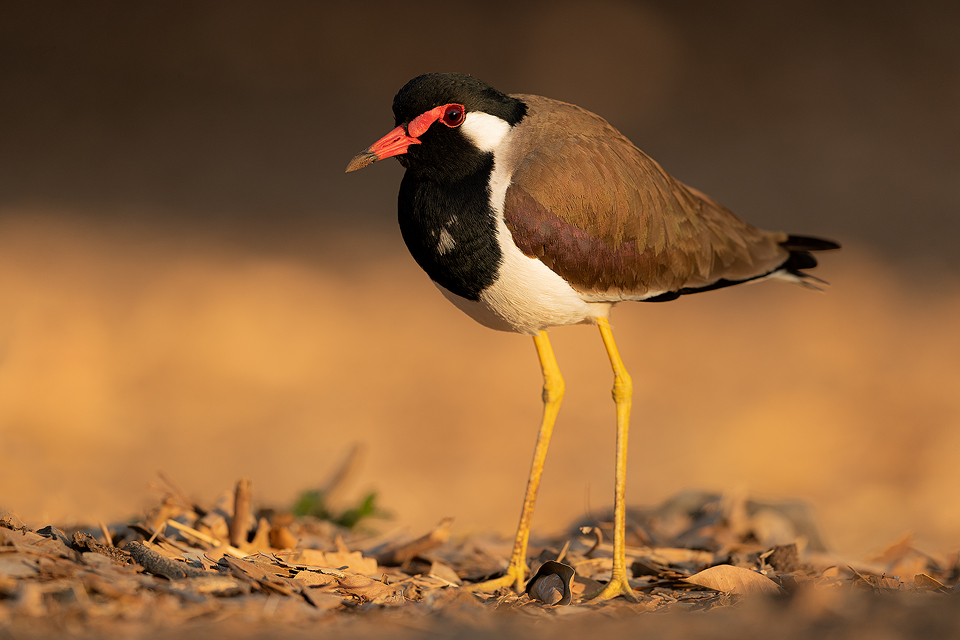
Red-wattled lapwing
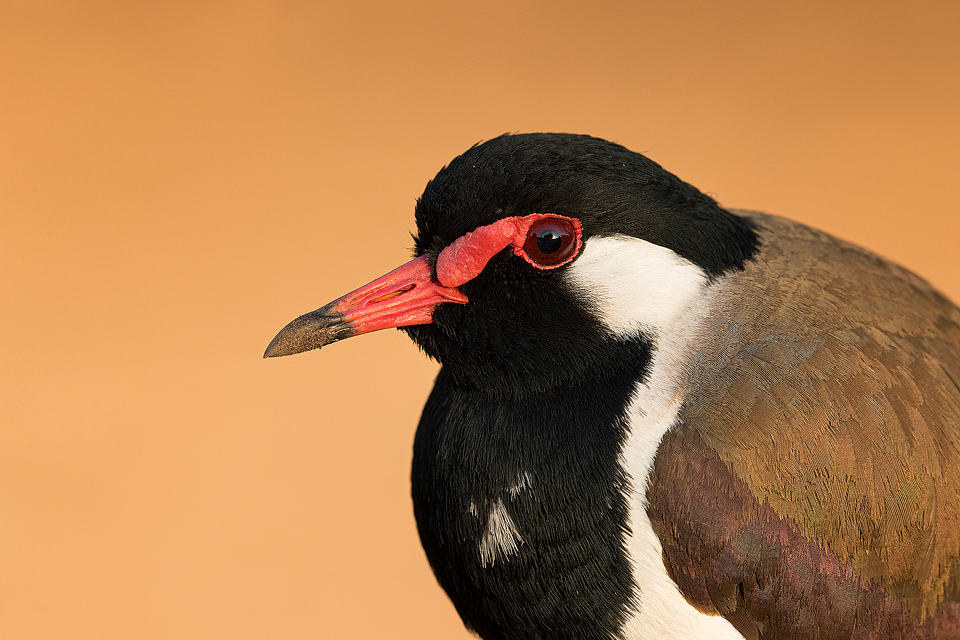
Red-wattled lapwing close up.
We listen intently for the alarm calls of grey langur and spotted deer, clues that give away the position of the secretive lions and leopards. Passing peacocks, nilgai, sambar, boar and a multitude of bird species. A few km along the trail we spot some forest guards on bikes, often a sign that a lion has been seen nearby. Sure enough they tell us of a resting male lion, tucked away in the vegetation. The driver picks up the pace and we speed along the track, excitement building by the moment. As we round the corner we spot a couple of jeeps pulled slightly off the track, this must be it!
Through the branches we can just see him, his tawny yellow skin perfectly camouflaged against the dry brown vegetation. We wait for the others to move and pull in to place so we can get a clear view through the vegetation and we’re so close! I can only fit his head and torso into the frame with my 500mm and he lifts his head to give us a cursory gaze before falling back to sleep. Lions, like most big carnivores, are primarily nocturnal animals and rarely move once they have settled down for the day. So we leave him to it and head back to the hotel.
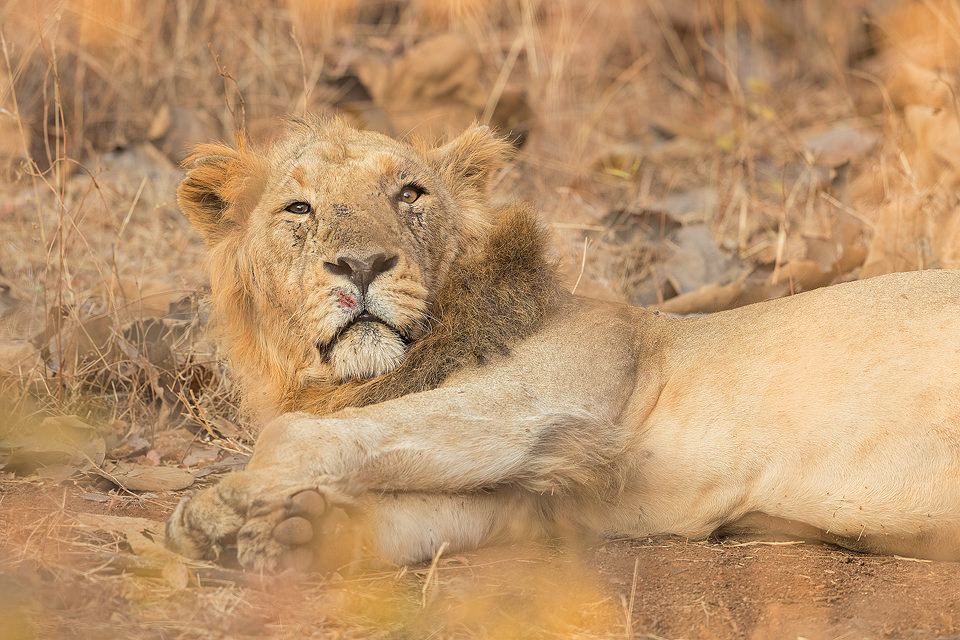
Male Asiatic Lion resting, late morning.
As we head out for the afternoon the bright blue cloudless sky contrasts beautifully with the dry yellow grasslands and brown leaved teak trees. It’s hot. We pass a stark white ghost tree amongst the sea of brown and yellow and watch a group of langurs sitting between the tangled vine-like branches of an ancient banyan tree. After our luck in the morning I’m optimistic, and it’s not misplaced.
Not far along the trail we spot more guards by the roadside who point towards an impressive male sitting by the track. Completely unfazed he sits calmly, staring peacefully in our direction. Satisfied we continue along the route and pass another jeep full of happy looking tourists, who tell us of two more lions drinking from the river! Again we pick up the pace speeding along in a cloud of dust.
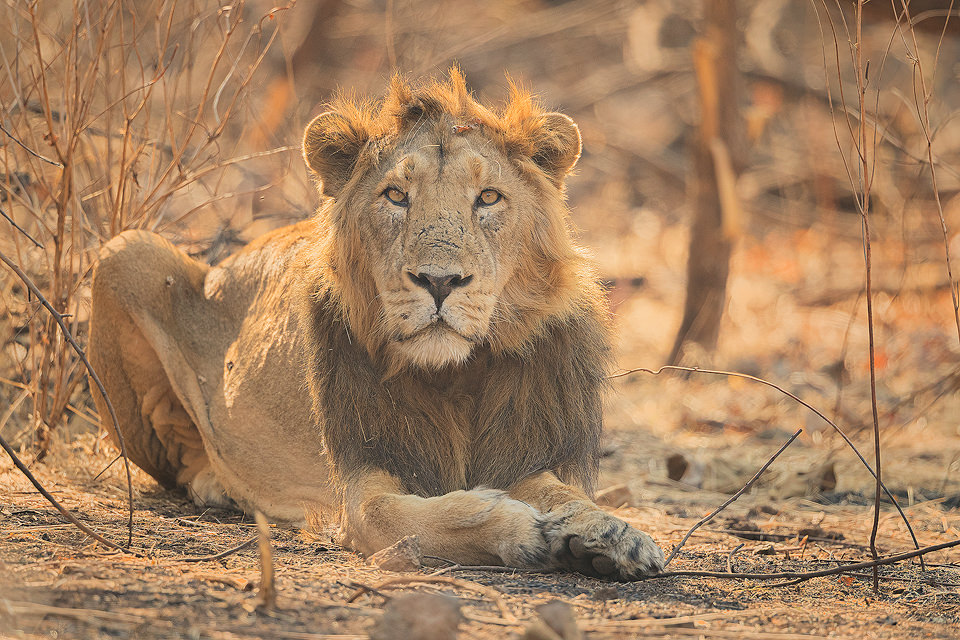
Male Asiatic Lion giving us a curious stare.
When we reach the area, the lions have sadly already settled back down but we have a clear view of them lying on a raised hillock. The guide tells us these are two young brothers who share a territory. Being the only jeep there we watched undisturbed taking in the experience. Four male lions and all on day one!
During the rest of the week we didn’t have a single bad safari and were treated to stunning up close views every day.
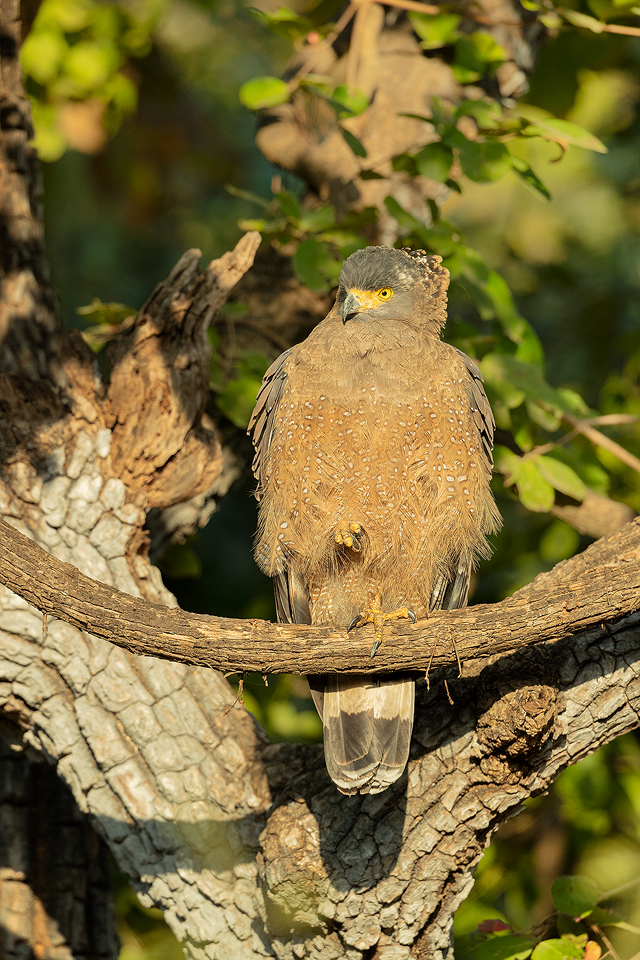
Crested Serpent Eagle
Aside from the lions, my favourite wildlife experience in Sasan Gir was an unexpected and highly unusual encounter with a striped hyena. During the week I had asked several guides about the possibility of spotting hyenas and was repeatedly told it was pretty much zero. Our guide for this morning had only seen a hyena twice in 15 years and only for the briefest of moments. After a quiet morning session and with the sun getting quite high in the sky we decided to call it a day and began chatting. Suddenly we rounded the corner and I spotted something in the middle of the track, a Hyena!

Male striped hyena scent marking the dry dusty track in the dry deciduous forests of Gir National Park.
I expected him to quickly disappear, but to my surprise during this amazing encounter we were treated to an uninterrupted half an hour alone. We followed him for several km as he scent marked his territorial border pausing every so often to glance back at us. Hyenas are nocturnal predators so to watch one in full daylight for such a long time was an amazing experience. As I took this image a leopard hidden in the vegetation growled right next to us and the hyena moved on. Torn between which one to stay with we decided to stick with the hyena; as the old saying goes a bird in the hand is worth two in the bush!
About the Asiatic Lions of Gir National Park:
Gir National Park in Gujarat is the last remaining home of the Asiatic Lion (Panthera leo persica). Asiatic lions were once widespread across the Middle East and into India, inhabiting desert, semi-desert and dry forests throughout the region. By the mid 20th century the world population was estimated at less than 50 individuals living. Approx 600 lions now inhabit the dry deciduous forests of Gir National Park in Gujarat. Making it one of the world’s greatest ever conservation success stories.
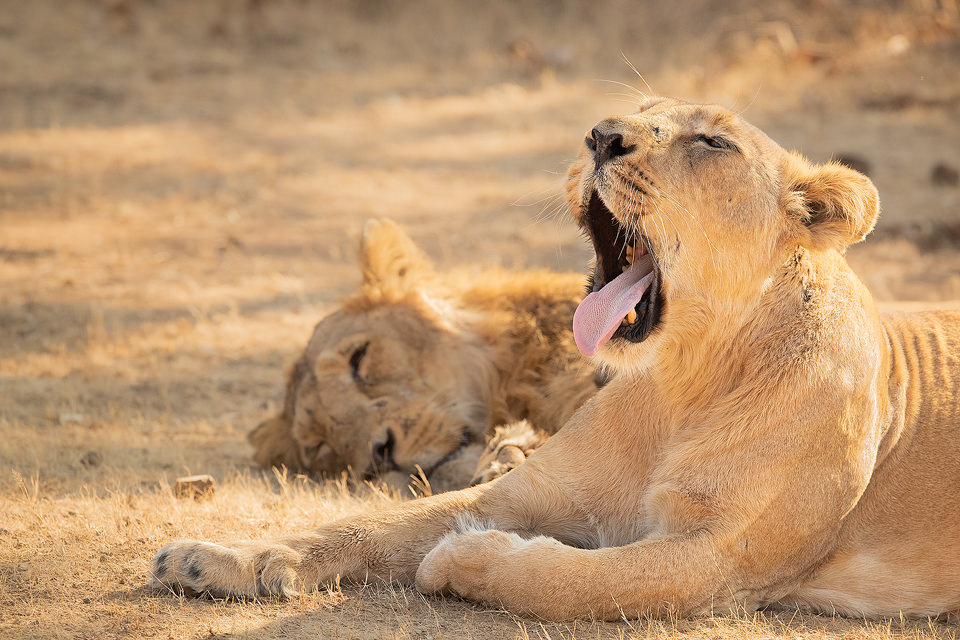
Asiatic lioness yawning next to her mate.
Despite the impressive increase in population size, the lions are still under threat from disease and inbreeding due to the small localised population. Conflict with humans is also common as three busy roads and a railway track pass through the 14,000 km² Gir Protected Area. Also, there are three big temples inside the PA that attract large number of pilgrims, particularly during certain times of the year. Due to the massive increase in population more than 200 lions now live outside the protected area where there have been cases of lions dying by falling into the unguarded wells or attacked by farmers protecting livestock.
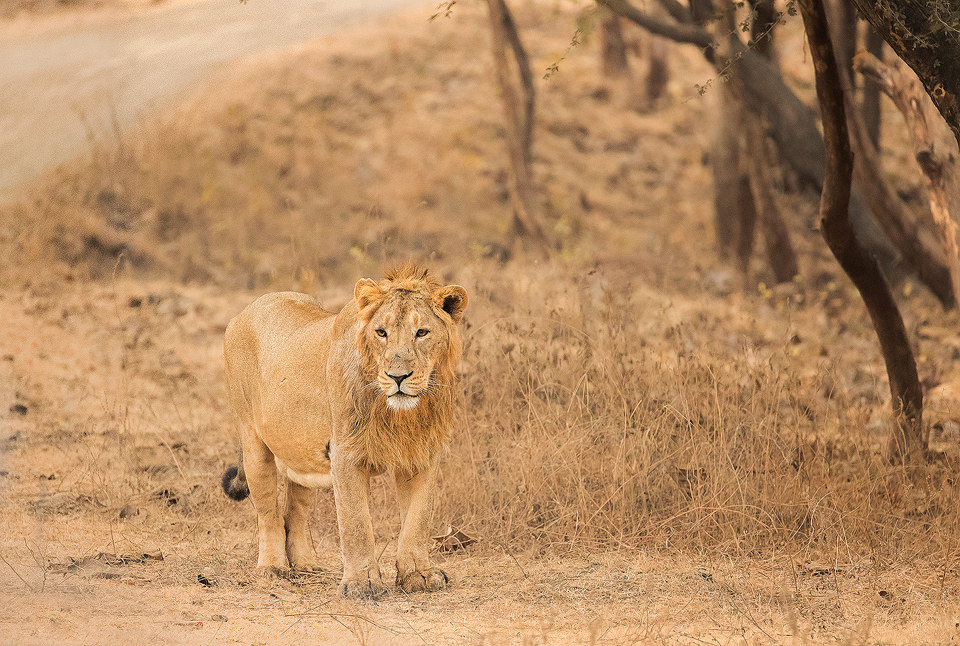
Asiatic Lion Habitat. Male Asiatic Lion in the dry deciduous forests of Gir National Park.
Asiatic lions are slightly smaller than their African cousins. Full grown male lions weigh 160-190 kg, while lionesses weigh 110-120 kg. They have a lifespan of around 18 years for the lioness and 16 for the males. The most striking aesthetic difference between Asiatic and African lions, is the distinctive fold of skin running along their bellies. Another visible difference is that Asiatic males have less mane growth at the top of the head, meaning their ears are always visible.
Asiatic Lions reach sexual maturity at 4 years old but the mane doesn’t full grow until after 9 years, in contrast to African lions who grow a full mane at around 7 years old. Males control a territory of approx 30km, which they regularly patrol and use scent making and roaring to establish boundaries.

Asiatic Lion Portrait

